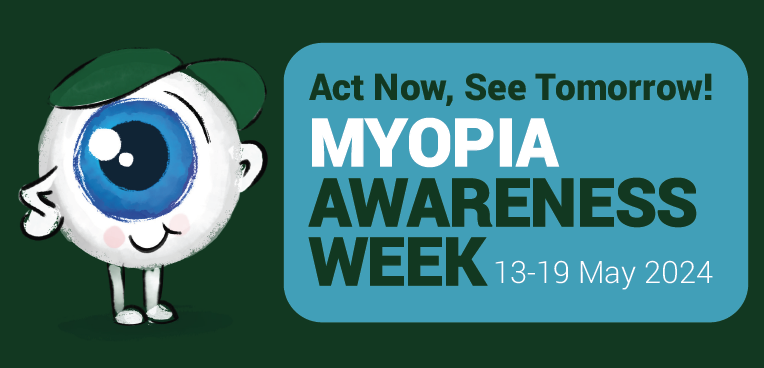
Ingrid Kuombo, PhD Candidate
BHVI
The etiology of myopia is complex. A number of environmental and genetic risk factors have been considered for myopia. Of these, parental myopia is widely considered an important myopia risk factor, but the evidence on parental myopia both in terms of onset and progression of myopia is conflicting. In this article, Mojarrad et al. (2018) aimed to determine if the use of a genetic risk score over parental myopia alone would improve the prediction of myopia onset. Retrospective data on genetic risk score and number of myopic parents for children aged 7-15 years from the Avon Longitudinal Study of Parents and Children (ALSPAC) birth cohort study was considered for the analysis.
The results from 3,320 children aged 7 years and 2,273 children aged 15 years showed that both the variables, i.e., number of myopic parents and genetic risk score were weakly predictive when considered alone for both age groups (increased slightly with age). However, combining the two predictor variables improved predictive performance at both ages, with the R2 increasing from 3.7 percent at age 7 to 7.0 percent at age 15. Considering the group of children where data was available for each child at both 7 years of age and 15 years of age, the use of genetic risk factor for prediction of refractive error increased from 0.7 percent at age 7 years to 2.0 percent at age 15 years. Whereas with the number of myopic parents, there was an increase from 2.8 percent at age 7 years to 4.6 percent at age 15 years. The combination of genetic risk score and number of myopic parents showed an increase of 3.2 percent from age 7 to age 15.
Overall, genetic risk score and number of myopic parents can independently predict the onset of myopia, but combining both factors appears to improve prediction. However, although they are predictive, significant improvements are needed in these scores before they can be used as factors in predicting the onset of myopia.
A genetic risk score and number of myopic parents independently predict myopia
Neema Ghorbani Mojarrad, Cathy Williams, and Jeremy A Guggenheim.
DOI: 10.1111/opo.12579
Abstract
Purpose: To investigate whether a genetic risk score (GRS) improved performance of predicting refractive error compared to knowing a child’s number of myopic parents (NMP) alone.
Methods: This was a retrospective analysis of data from the Avon Longitudinal Study of Parents and Children (ALSPAC) birth cohort study. Refractive error was assessed longitudinally between ages 7–15 using non-cycloplegic autorefraction. Genetic variants (n = 149) associated with refractive error from a Consortium for Refractive Error and Myopia (CREAM) genome-wide association study were used to calculate a GRS for each child. Using refractive error at ages 7 and 15 years as the outcome variable, coefficient of determination (R2 ) values were calculated via linear regression models for the predictors: NMP, GRS and a combined model.
Results: Number of myopic parents was weakly predictive of refractive error in children aged 7 years, R2 = 3.0 percent (95 percent CI 1.8–4.1 percent, p < 0.0001) and aged 15 years, R2 = 4.8 percent (3.1–6.5 percent, p < 0.0001). The GRS was also weakly predictive; age 7 years, R2 = 1.1 percent (0.4–1.9 percent, p < 0.0001) and 15 years R2 = 2.6 percent (1.3–3.9 percent, p < 0.0001). Combining the two variables gave larger R2 values at age 7, R2 = 3.7 percent (2.5–5.0 percent, p < 0.0001) and 15, R2 = 7.0 percent (5.0–9.0 percent, p < 0.0001). The combined model improved performance at both ages (both p < 0.0001).
Conclusion: A GRS improved the ability to detect children at risk of myopia independently of knowing the NMP. We speculate this may be because NMP captures information concerning environmental risk factors for myopia. Nevertheless, further gains are required to make such predictive tests worthwhile in the clinical environment.
Ghorbani Mojarrad, N., Williams, C., & Guggenheim, J. A. (2018). A genetic risk score and number of myopic parents independently predict myopia. Ophthalmic and Physiological Optics, 38(5), 492-502.
- Rucker F. Monochromatic and white light and the regulation of eye growth. Experimental Eye Research. 2019;184:172-82.
- Xiong SY, Sankaridurg P, Naduvilath T, Zang JJ, Zou HD, Zhu JF, et al. Time spent in outdoor activities in relation to myopia prevention and control: a meta-analysis and systematic review. Acta Ophthalmologica. 2017;95(6):551-66.
- Jiang X, Kurihara T, Torii H, Tsubota K. Progress and Control of Myopia by Light Environments. Eye & contact lens. 2018;44(5):273-8.
- Torii H, Kurihara T, Seko Y, Negishi K, Ohnuma K, Inaba T, et al. Violet Light Exposure Can Be a Preventive Strategy Against Myopia Progression. EBioMedicine. 2017;15:210-9.
- Torii H, Ohnuma K, Kurihara T, Tsubota K, Negishi K. Violet Light Transmission is Related to Myopia Progression in Adult High Myopia. Sci Rep. 2017;7(1):14523.




